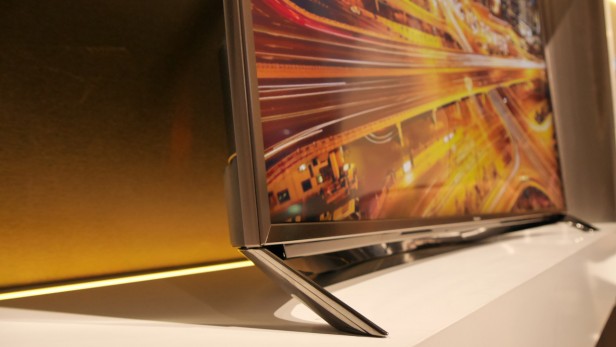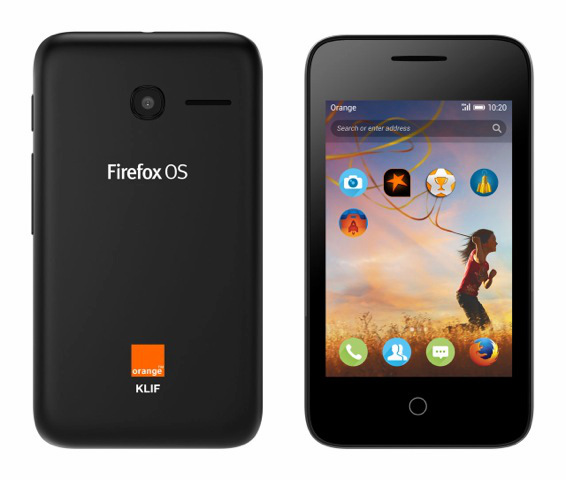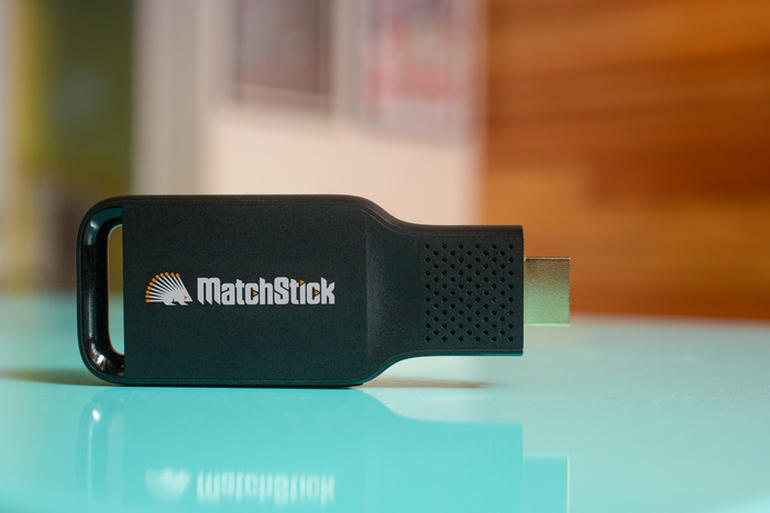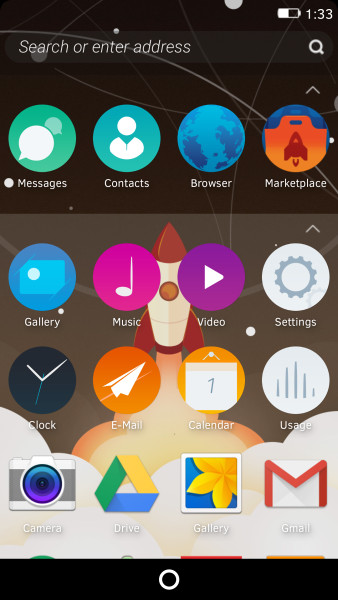Although Google and Apple have been able to hold an iron grip over the mobile duopoly in the last years, alternatives constantly keep emerging, trying to loosen this grip. Compared to Android or iOS, they have had moderate success, but as standalone initiatives, CyanogenMod, Firefox OS, Tizen and others offered a refreshing new perspective with great promise.
While struggling to have a noticeable impact, Firefox OS has come a long way since it debuted in 2013 (let’s not forget Android in its early years). While I still consider 2014 as a rollercoaster year for Mozilla, 2015 won’t be far behind. Changes, internal and external news are bound to shape Firefox OS’s future, some in the short term.
Let’s recapture the most important news about Firefox OS in the past months.
Panasonic Launches Firefox OS TVs
After showing Firefox OS on TV’s at CES, Panasonic’s Smart TV’s powered by Firefox are now on sale in Europe. 
As a Firefox OS launch partner of Mozilla, Panasonic’s latest line of Viera smart TV’s includes the CR850, CR730, CX800, CX750, CX700 and CX680 models.
According to Panasonic, the TVs support web apps alongside other web content and interactions with other devices. Mozilla has seeded APIs to help developers build for the platform. As of now there are various content companies offering apps for the platform, such as Netflix, Hulu and Youtube.
Firefox OS Launching in Africa

In March Mozilla introduced a new deal with France’s Orange, which will be selling a new phone called the “Klif“. It’s a device that will sell for under $40, including a bundle of voice, data and text services. The Klif is already available in 13 markets including Egypt, Senegal, Tunisia, Cameroon, Botswana, Madagascar, Mali, The Ivory Coast, Jordan, Niger, Kenya, Mauritius and Vanuatu.
New Strategy “Ignite”
A new “Ignite” initiative under CEO Chris Beard aims to change the strategy regarding Firefox OS by focusing on selling Firefox OS smartphones which
“…people want to buy because of the experience, not only the price”.
Mozilla’s $25 handsets did raise some interest, but were unable to gain bigger traction.
“We have not seen sufficient traction for a $25 phone, and we will not pursue all parts of the program”,
Beard noted.
New Firefox OS devices will come with an enhanced ability to work offline, an improved software update delivery system and go beyond Web apps. Ignite promises to add support for flip phones and boost Mozilla’s position regarding Firefox OS and the Internet of Things.
Mozilla is considering adding Android app compatibility to Firefox OS, which would mean a wider app ecosystem with more possibilities.
“To bridge this app gap between user expectations and the readiness of the ecosystem, we will explore implementing Android app compatibility.”
It remains to be seen just how Mozilla will make Android apps work well on Firefox OS, but only a few are expected to debut on the platform. If everything works out, adding more Android apps is possible in the future.
Beard further acknowledged that Mozilla faces
“…sophisticated competition from the most aggressive and largest technology companies in the world…”
but believes that Firefox OS can make it with the right recipe of apps, features, and pricing.
Leadership Change
On 5th June, Chief Technology Officer Andreas Gal left Mozilla after nearly seven years, to launch a startup that hopes to provide the computing brains for the Internet of Things. Gal co-founded the Firefox OS efforts and his startup’s two co-founders were also employees.

Less than 2 weeks after the announcement of the Ignite initiative, Gal’s departure marks a major change Mozilla faces with Firefox OS. A month before, Mozilla’s former president, Li Gong, left Mozilla to work on another startup named Gone Fishing, which aims to build a mobile operating system on the same web principles of Firefox OS.
Another Firefox OS executive is also leaving Mozilla to Gone Fishing, James Ho, Mozilla’s senior director of mobile devices.
With Gong and Ho’s departure, more than 30 engineers from Mozilla Taiwan were also ‘poached’ by Gone Fishing. According to some Taiwanese sources, just one day after leaving Mozilla Taiwan, James Ho began recruiting mid and senior-level employees from the company to work at the company.
When Mozilla set up in Taiwan in 2012, they chose it as an R&D center for three reasons: its inexpensive labor, high-quality talent pool and key position in the global technology hardware supply chain. However it seems that Mozilla Taiwan is rapidly losing talent, as better compensation packages are being offered, in this case by Gone Fishing.
After Gal’s departure, David Bryant has been assigned the role of Interim CTO.
Spark
As noted in the Mozilla Wiki:
Spark is a set of tools, customizations, and features built on top of the next generation of the Firefox OS platform and is a subset of the Ignite initiative. Spark is intended to empower users to customize their experience, hack whatever they want to, and make their devices truly theirs. The intention is that we will leverage web technologies for real-time hacking, as other platforms rely on native binaries that are difficult to edit once compiled. Sharing web apps and hacks is also easier as they are more portable and standards-driven.
For example, if you want a button in your Dialler that says “Call Mom”, and it does just that. You could use the tools from Spark to do any of the below:
- Open on-device developer tools to script your own new button that gets added to the app every time you open it.
- Open the app in WebIDE and make your changes.
- Download a new Dialler app from Hackerplace which does what you want to replace the existing app.
- Share the new app, or customization to people nearby using the Sharing app, or by submitting it to Hackerplace.
- Use the Theme Editor app to change app themes, so that the rest of the Dialler fits in with the color that you want the “Call Mom” button to be.
The first demo of Spark was revealed at the Mozilla Work Week in Whistler, Canada and should be shown in public soon.
Matchstick coming in August
Matchstick is a pocket-sized wifi-enabled stick that you plug into an HDMI port on your TV or monitor. With Matchstick, you can stream content from any smartphone, tablet, or laptop to a big screen TV. In short, it’s an open source alternative to Google Chromecast (even the hardware is open).
Unfortunately, Matchstick’s Kickstarter backers will have to wait longer to get the Firefox OS-based streaming stick as Matchstick is delaying shipments until August, the company announced in February.

Matchstick wants to use that time to put digital rights management (DRM) in place and update its hardware to a faster chipset. Unfortunately DRM is a key requirement to get premium video apps like Netflix. Originally, Matchstick wanted to ship the first devices to backers in February.
In an update posted to Kickstarter in April, the company said it has been exploring a number of new applications for the streaming stick that would require higher local processing power. Hence Matchstick is now planning to ship with a quad-core chipset as opposed to the dual-core Rockchip CPU that was originally announced.
That said, with the various delays and lack of communication, Matchstick may have lost the faith of its supporters. We will have to wait and see until August how this turns out.
‘Firefox OS in Action’ Ebook
The newest Firefox OS book by Jan Jongboom provides a solid base for anyone who wants to dive deeper into the Firefox OS ecosystem. It teaches readers how to create responsive and functional applications from the ground up. In the book you’ll find tutorials on sensor usage, animations, design, offline usage and much more.
The book comes with a suggested purchase price of $15, but works on a ‘pay what you feel’ model.
b2gdroid – Firefox OS Launcher for Android
Recently a homemade Firefox OS Launcher for Android, b2gdroid, was released. It puts a sort-of-working, mostly complete implementation of the Firefox OS experience as a launcher for Android devices. If you are curious to try out the Firefox OS experience on your device, but were not comfortable with flashing or buying a device, b2gdroid might give you a good insight.

Although it’s similar to the proper Firefox OS experience, it’s pretty laggy at some points (the launcher is still in development).
Fire still burning
Mozilla has struggled to keep momentum with Firefox OS, however this big wave of changes could make an impact on Firefox OS’ perception in the market. With partners from dozens of countries and varying consumer needs, it has not been an easy journey. I for one wait to see what the result of these new strategies will be.
 Elio Qoshi
Elio QoshiElio is a open source designer and founder of Ura Design. He coordinates community initiatives at SitePoint as well. Further, as a board member at Open Labs Hackerspace, he promotes free software and open source locally and regionally. Elio founded the Open Design team at Mozilla and is a Creative Lead at Glucosio and Visual Designer at The Tor Project. He co-organizes OSCAL and gives talks as a Mozilla Tech Speaker at various conferences. When he doesn’t write for SitePoint, he scribbles his musings on his personal blog.

